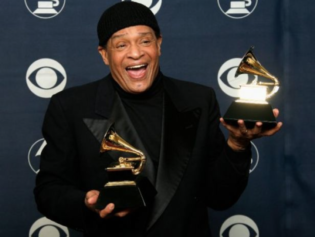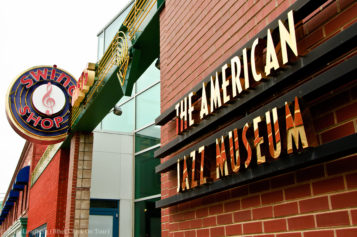DownBeat recently sat down with jazz violinist Regina Carter to discuss the Reverse Thread album and to learn about how she continues to find different sources of inspiration.
How did growing up in Detroit impact you and your music?
Growing up in Detroit, there was so much music going on. Detroit was a culturally rich city, and so many people migrated to the city because of Motown and the automotive industry. At a very young age, I was exposed to a lot of different cultures of music without ever having to leave the city—my brothers were playing Motown music and I was studying European classical music. My mom took me to hear the symphony and see the ballet. So I feel like I’ve internalized a lot of those sounds and [get a feeling of] joy from a lot of different styles of music. And I feel like that comes out in the music that I play and in the projects that I choose to do.
Was the violin your first instrument?
No, actually. Piano was my first instrument. I started piano when I was 2. My two older brothers were taking piano lessons and one day, while the teacher was there giving them a lesson, I walked up and started playing a piece that one of my brothers had been working on. And they were shocked. She thought someone had taught me the song, and they said, “No, we didn’t even know she could play.” So she tested me and told my mother I had a gift for music—that I could hear and repeat things that I would hear. And the teacher suggested that I take piano lessons. I studied for a while with a woman in Detroit named Anna Love, and she thought I was too young. I would come to my lessons and instead of practicing a lesson she gave me, I would come in and show her the tunes that I had composed. [laughs] I would draw these big circles on the paper, and that would be my song. It’s so wonderful because this woman held onto these drawings. When I graduated from high school, she made a book out of them and gave them to my mom. At 3, she didn’t want to discourage that, so she told my mother to let me be creative at home and wait until I got older. And then when I was 4, the Suzuki method for strings was offered in Detroit and Anna called my mom and said she thought she should enroll me in these classes.
When did you first venture into jazz?
When I was in high school, one of my closest friends, a jazz vocalist named Carla Cook, would come to school and always talk about vocalist Eddie Jefferson and Miles Davis. I had never heard of any of these people. She brought in a record by Jean-Luc Pointy, Noel Pointer and Stéphane Grappelli. So my first introduction to jazz was by way of three violinists. I had no idea that there would be any other music for violin. And I was totally blown away by this other music. I wanted to do it. I would listen to these records of these three violinists and start to learn their solos and the tunes by ear and then put a band together. When I studied Suzuki, my teacher introduced us to improvisation, not jazz improvisation, but just being off the paper. Jean Rupert, our teacher, would make up a melody, and when she tapped you on the shoulder, you had to pick up where she left off and continue with the melody in the same style and have it make sense. It was like a game of telephone tag. So I wasn’t shy about improvising. I think I loved the fact that I could improvise and have my own voice in the music. So that’s really, I think, what attracted me to jazz.
Early in your career, you also worked with more mainstream pop acts like Billy Joel, Ms. Lauryn Hill, even the “Queen of Soul,” Aretha Franklin. Has it always been easy for you to jump from different genres of music?
I have to really give credit to the Suzuki method for the ease with which I feel like I’m able to kind of move between languages, because that method stresses ear training. Like when people take a language immersion class, basically, that’s what Suzuki is. It’s not just learning the words or the notes, but in a specific genre, it’s learning how those notes are pronounced. I think because of my ear I’m able to sometimes pick things up and not feel bashful about it. There’s more to learning music, of course, than just hearing it and trying to imitate it. I always believe that if you really want to learn a culture of music, you need to understand its history and everything about it—not just the sound. I’m not afraid to try new things, and I find the challenge kind of exhilarating. And that makes playing more exciting.
Do you think that jazz still feels like an all-boys club in terms of the number of female players today?
There are definitely more males playing this music than women, and I think there are a lot of reasons for that. When young women are deciding on their careers, if they decide that they want to have a family, unless they’re making enough money to bring someone on the road with them, they have to have a family situation where they can leave their kids at home. So then it’s a matter of not touring as much, teaching or doing something else. Whereas men, you know, as long as they’re married or have someone at home with their kids, it’s easier for them to just up and leave because children really need their mothers. So that’s one reason why we may see fewer women. And there’s a certain swagger in the music—a certain attitude. When I work with young musicians, I see that young boys tend to pick up on that and imitate that right [off] the bat. They know it kind of goes along with the music. I think that very, very few young girls feel comfortable being that aggressive. So if someone doesn’t take the time out to really push them, they get left behind and decide that it’s not a comfortable position for them to be in. And I think that also a lot of attention is, and has been, focused on vocalists. If I walk into a club or situation where I’ve never played, and the people don’t know me, someone will ask, “Oh, so you sing?” The girl is always the singer. As much as we think we’ve advanced in some areas, we’ve either not advanced or have gone backwards, actually.
To read the entire story by Shannon J. Effinger, go to DownBeat

